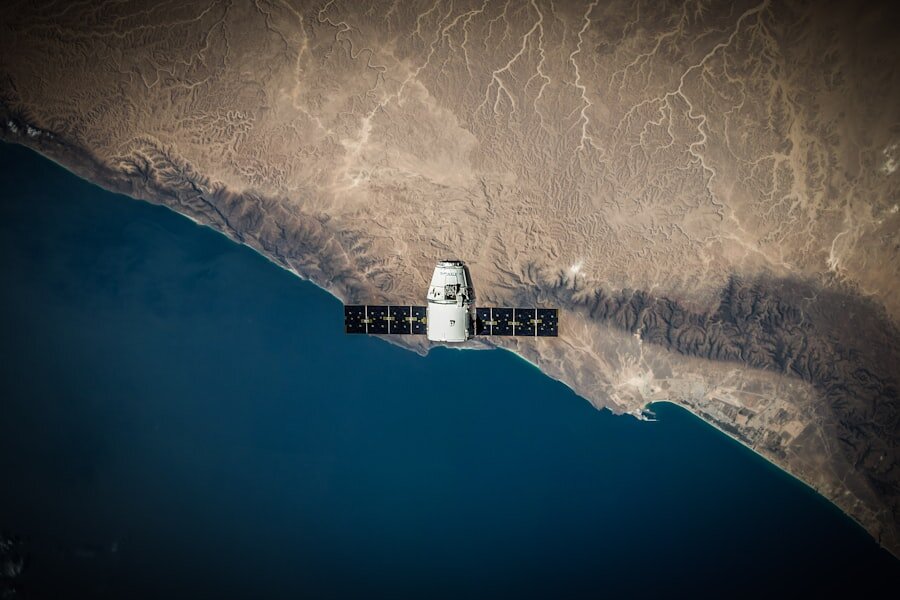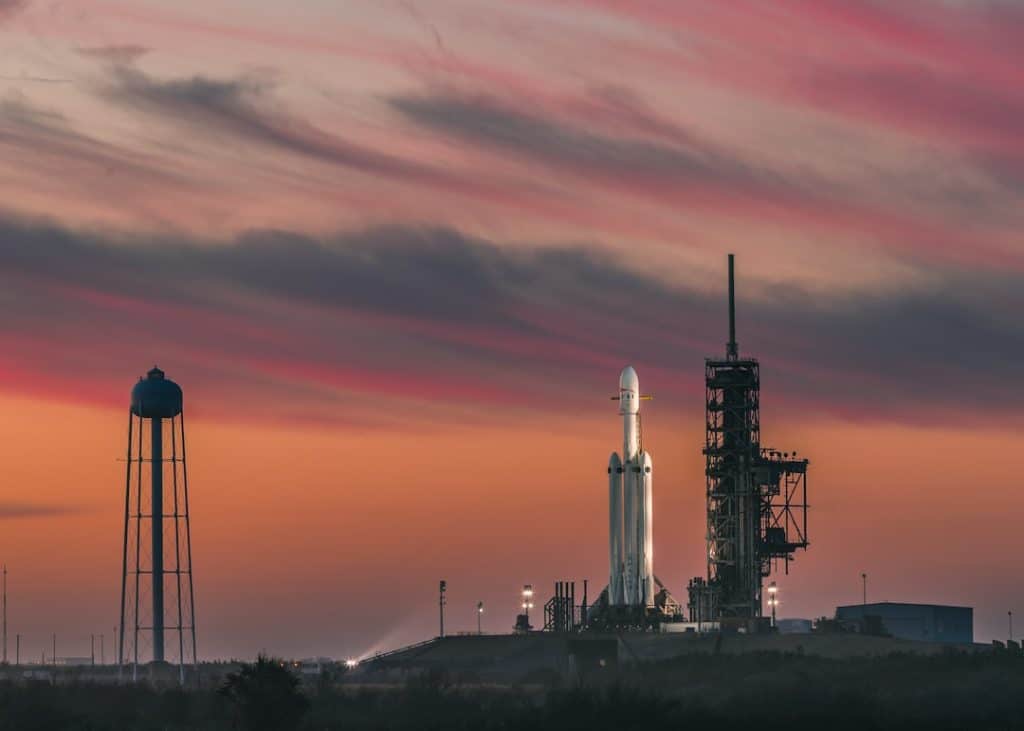The aerospace industry has long been a beacon of innovation, pushing the boundaries of what is possible in both aviation and space exploration. Over the decades, advancements in this field have not only transformed how we travel but have also significantly influenced global economies, national security, and scientific research. The evolution of aerospace technology is marked by milestones that have redefined human capabilities, from the first powered flight by the Wright brothers to the recent achievements in reusable rocket technology.
As we delve into the current landscape of aerospace advancements, it becomes evident that the integration of cutting-edge technologies and innovative engineering practices is driving the industry toward unprecedented heights. In recent years, the pace of advancements has accelerated dramatically, fueled by a combination of technological breakthroughs, increased investment, and a growing emphasis on sustainability. The aerospace sector is now at a crossroads where traditional practices are being challenged by new methodologies that prioritize efficiency, safety, and environmental responsibility.
This article will explore the multifaceted nature of these advancements, examining the role of technology, innovations in design and manufacturing, breakthroughs in space exploration, and the impact of artificial intelligence. Furthermore, we will discuss sustainable solutions and the future of commercial space travel while addressing the challenges and opportunities that lie ahead.
Key Takeaways
- Standard aerospace advancements have significantly improved over the years, leading to innovations in aircraft design, space exploration, and the use of artificial intelligence.
- Technology plays a crucial role in driving aerospace advancements, enabling the development of more efficient and sustainable solutions in aerospace engineering.
- Advancements in aircraft design and manufacturing have led to the creation of more fuel-efficient and environmentally friendly aircraft, reducing the industry’s carbon footprint.
- Innovations in space exploration have opened up new possibilities for human exploration and scientific research, with the potential for future commercial space travel.
- The impact of artificial intelligence in aerospace is evident in the development of autonomous systems, predictive maintenance, and improved safety measures, revolutionizing the industry.
The Role of Technology in Aerospace Advancements
Technology serves as the backbone of modern aerospace advancements, enabling engineers and scientists to develop solutions that were once thought to be unattainable. The integration of advanced materials, such as carbon fiber composites and titanium alloys, has revolutionized aircraft construction. These materials offer superior strength-to-weight ratios, allowing for lighter and more fuel-efficient designs.
For instance, the Boeing 787 Dreamliner utilizes composite materials extensively, resulting in a significant reduction in fuel consumption compared to traditional aluminum aircraft. This shift not only enhances performance but also contributes to lower operational costs for airlines. Moreover, digital technologies have transformed the aerospace landscape through the adoption of computer-aided design (CAD) and simulation tools.
These technologies allow engineers to create highly detailed models and conduct virtual testing before physical prototypes are built. The use of computational fluid dynamics (CFD) simulations has enabled designers to optimize aerodynamic shapes, leading to improved fuel efficiency and reduced noise levels. Additionally, advancements in additive manufacturing, or 3D printing, have opened new avenues for producing complex components with reduced waste and shorter lead times.
For example, GE Aviation has successfully implemented 3D printing for fuel nozzles in jet engines, resulting in parts that are lighter and more efficient than their traditionally manufactured counterparts.
Advancements in Aircraft Design and Manufacturing

The design and manufacturing processes in aerospace have undergone a significant transformation due to technological advancements. One notable trend is the shift towards modular design principles, which allow for greater flexibility in production and maintenance. By designing aircraft with interchangeable components, manufacturers can streamline assembly processes and reduce downtime during repairs.
This approach not only enhances operational efficiency but also facilitates upgrades and modifications throughout an aircraft’s lifecycle. Furthermore, the implementation of digital twin technology has emerged as a game-changer in aircraft design and manufacturing. A digital twin is a virtual representation of a physical asset that can be used for real-time monitoring and analysis.
In aerospace, this technology enables manufacturers to simulate an aircraft’s performance under various conditions, allowing for predictive maintenance and optimization of operational parameters. For instance, Airbus has utilized digital twin technology to monitor the health of its A350 fleet, leading to proactive maintenance strategies that minimize disruptions and enhance safety. The use of automation in manufacturing processes has also gained traction within the aerospace sector.
Robotics and automated systems are increasingly employed in assembly lines to improve precision and reduce human error. Companies like Boeing have integrated robotic systems for tasks such as drilling and fastening components, resulting in faster production times and higher quality standards. This automation not only enhances efficiency but also addresses labor shortages in skilled trades, ensuring that production can keep pace with growing demand.
Innovations in Space Exploration
| Spacecraft Name | Mission | Year Launched |
|---|---|---|
| Voyager 1 | Interstellar exploration | 1977 |
| Curiosity Rover | Mars exploration | 2011 |
| SpaceX Dragon | International Space Station resupply | 2010 |
The realm of space exploration has witnessed remarkable innovations that have expanded our understanding of the universe and our capabilities beyond Earth. One of the most significant advancements is the development of reusable rocket technology, exemplified by SpaceX’s Falcon 9 rocket. This groundbreaking approach allows rockets to return to Earth after delivering payloads to orbit, drastically reducing launch costs and increasing access to space.
The successful landings of Falcon 9 boosters have set a new standard for space missions, paving the way for more frequent launches and ambitious projects such as crewed missions to Mars. In addition to reusable rockets, advancements in propulsion systems are reshaping space exploration. Ion propulsion systems, which utilize electric fields to accelerate ions for thrust, offer a more efficient alternative to traditional chemical rockets.
NASA’s Dawn spacecraft employed ion propulsion to explore the asteroid belt, demonstrating the potential for long-duration missions with minimal fuel consumption. These innovations not only enhance mission capabilities but also open new possibilities for deep-space exploration. Moreover, advancements in satellite technology have revolutionized our ability to observe and understand Earth and other celestial bodies.
High-resolution imaging satellites equipped with advanced sensors provide critical data for climate monitoring, disaster response, and resource management. The deployment of small satellites or CubeSats has further democratized access to space research, enabling universities and startups to contribute to scientific endeavors without the prohibitive costs associated with traditional satellite launches.
The Impact of Artificial Intelligence in Aerospace
Artificial intelligence (AI) is increasingly becoming a cornerstone of aerospace advancements, offering solutions that enhance safety, efficiency, and decision-making processes. In aviation, AI algorithms are being integrated into flight management systems to optimize flight paths based on real-time data such as weather conditions and air traffic. This capability not only improves fuel efficiency but also enhances safety by reducing the likelihood of mid-air collisions.
AI is also playing a pivotal role in predictive maintenance within the aerospace industry. By analyzing vast amounts of data collected from aircraft sensors, AI systems can identify patterns that indicate potential failures before they occur. This proactive approach allows airlines to schedule maintenance more effectively, minimizing downtime and reducing operational costs.
For example, Delta Air Lines has implemented AI-driven predictive maintenance solutions that have resulted in significant savings by preventing unscheduled repairs. Furthermore, AI is transforming the design process itself through generative design techniques. By leveraging machine learning algorithms, engineers can explore a multitude of design options based on specified parameters such as weight constraints and material properties.
This approach enables the creation of highly optimized structures that may not have been conceived through traditional design methods. Boeing has utilized generative design to develop lightweight components for its aircraft, showcasing how AI can drive innovation in aerospace engineering.
Sustainable Solutions in Aerospace Engineering

As environmental concerns continue to mount globally, the aerospace industry is increasingly prioritizing sustainable solutions in its engineering practices. One significant area of focus is the development of alternative fuels that can reduce greenhouse gas emissions from aviation. Sustainable aviation fuels (SAFs), derived from renewable sources such as plant materials or waste products, have gained traction as a viable option for reducing carbon footprints.
Airlines like KLM and United Airlines have begun incorporating SAFs into their operations, demonstrating a commitment to sustainability while maintaining performance standards. In addition to alternative fuels, electric propulsion systems are emerging as a promising solution for reducing emissions in aviation. Electric aircraft are being developed with the potential to operate on battery power or hybrid systems that combine traditional engines with electric motors.
Companies like Pipistrel are pioneering electric aircraft designs aimed at short-haul flights, showcasing how electrification can lead to quieter operations and lower environmental impact. Moreover, advancements in aerodynamics play a crucial role in enhancing fuel efficiency and reducing emissions. Researchers are exploring innovative wing designs that minimize drag during flight while maximizing lift.
The use of winglets—small vertical extensions at the tips of wings—has become commonplace in modern aircraft design due to their ability to reduce vortex drag and improve fuel efficiency. The Boeing 737 MAX features advanced winglets that contribute to its overall performance improvements.
The Future of Commercial Space Travel
The future of commercial space travel is poised for exponential growth as private companies continue to innovate and expand their offerings beyond Earth’s atmosphere. With companies like SpaceX leading the charge with their Crew Dragon spacecraft and Blue Origin developing suborbital tourism experiences through New Shepard, the dream of space tourism is becoming a reality for those who can afford it. These developments signal a new era where space travel may transition from an exclusive endeavor reserved for astronauts to an accessible experience for civilians.
The potential applications of commercial space travel extend beyond tourism; they encompass scientific research, satellite deployment, and even potential colonization efforts on other celestial bodies. SpaceX’s Starship aims not only to facilitate crewed missions to Mars but also to enable interplanetary travel on a scale previously unimaginable. As these technologies mature, we may witness an increase in collaborative efforts between governments and private enterprises aimed at exploring new frontiers.
However, this burgeoning industry also raises questions about regulation, safety standards, and environmental impacts associated with increased space traffic. As more entities enter the commercial space arena, establishing frameworks that ensure safe operations while fostering innovation will be paramount. The collaboration between regulatory bodies like NASA and emerging private companies will be essential in shaping a sustainable future for commercial space travel.
Challenges and Opportunities in Standard Aerospace Advancements
Despite the remarkable progress made within the aerospace sector, numerous challenges persist that could hinder further advancements. One significant challenge is the high cost associated with research and development (R&D) efforts required to bring innovative technologies from concept to reality. The aerospace industry demands substantial investments in R&D due to stringent safety regulations and complex engineering requirements.
Smaller companies may struggle to secure funding necessary for groundbreaking projects while larger corporations face pressure to deliver returns on investment quickly. Additionally, workforce shortages pose another challenge as experienced professionals retire from the industry without sufficient replacements entering the field. The demand for skilled engineers, technicians, and pilots continues to grow alongside technological advancements; however, educational institutions may not be keeping pace with this demand.
Addressing this skills gap through targeted training programs and partnerships between academia and industry will be crucial for sustaining innovation within aerospace. Conversely, these challenges present opportunities for collaboration across sectors—between academia, government agencies, and private enterprises—to drive innovation forward collectively. Initiatives aimed at fostering public-private partnerships can facilitate knowledge sharing while pooling resources toward common goals such as sustainability or advanced propulsion systems development.
In conclusion, while challenges abound within standard aerospace advancements today—ranging from funding constraints to workforce shortages—the potential for transformative change remains vast as technology continues evolving rapidly across multiple domains within this dynamic industry landscape.


